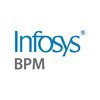
i
Teleperformance
Filter interviews by
Teleperformance Senior Financial Analyst Interview Questions and Answers
Be the first one to contribute and help others!
Interview questions from similar companies

(1 Question)
- Q1. What is depreciation
- Ans.
Depreciation is the allocation of the cost of a tangible asset over its useful life.
Depreciation is a non-cash expense that reduces the value of an asset over time.
It reflects the wear and tear, obsolescence, or decrease in value of an asset.
Common methods of calculating depreciation include straight-line, double declining balance, and units of production.
Example: A company purchases a delivery truck for $50,000 with a...
(1 Question)
- Q1. Tell me about yourself
- Ans.
Experienced financial analyst with a strong background in budgeting, forecasting, and financial modeling.
Over 5 years of experience in financial analysis
Proficient in Excel, financial software, and data analysis
Strong analytical skills and attention to detail
Managed budgeting process for a Fortune 500 company
Developed complex financial models to support strategic decision-making

Interview Questionnaire
1 Question
- Q1. Behavioural questions for financial analyst interview
Interview Preparation Tips
Problem solving ability to achieve a successful outcome.

I applied via Naukri.com and was interviewed in Nov 2020. There was 1 interview round.
Interview Questionnaire
2 Questions
- Q1. Self Introduction
- Q2. How to calculate income? This was Related to Mortagage
Interview Preparation Tips

I applied via Campus Placement and was interviewed in Oct 2024. There was 1 interview round.
Executive summary/synopsis the topic area of the report introduction . Sammarise the your tork find thi identify the problem you have identified by
Interview Preparation Tips

Financial Analyst Interview Questions & Answers
Concentrix Corporationposted on 13 Feb 2020
I applied via Referral
Interview Questionnaire
1 Question
- Q1. What new changes can get from this new opportunity?
- Ans.
This new opportunity can bring several new changes to my career as a Financial Analyst.
Access to new industry sectors and markets
Opportunity to work with a diverse team and learn from their expertise
Exposure to new financial tools and technologies
Chance to develop advanced analytical skills
Potential for career growth and advancement
Interview Preparation Tips

I applied via Walk-in and was interviewed before Jan 2020. There were 5 interview rounds.
Interview Questionnaire
4 Questions
- Q1. Where do you see yourself after 5 years from now?
- Q2. Will you relocate if you get better option in company?
- Q3. What is your expected salary?
- Q4. Why company should pay you as your demand?
Interview Preparation Tips

Interview Questionnaire
1 Question
- Q1. Behavioural questions for financial analyst interview
Interview Preparation Tips
Problem solving ability to achieve a successful outcome.

(6 Questions)
- Q1. There are three branches of accounting
- Ans.
The three branches of accounting are financial accounting, management accounting, and cost accounting.
Financial accounting focuses on reporting financial information to external stakeholders.
Management accounting involves providing financial information to internal management for decision-making.
Cost accounting deals with analyzing and controlling costs within a company.
Each branch serves a different purpose and audien
- Q2. Types of accounting golden rules
- Ans.
The accounting golden rules are basic principles that guide the process of recording financial transactions.
There are three types of accounting golden rules: Personal Account, Real Account, and Nominal Account.
Personal Account: Debit the receiver, credit the giver. Example: When cash is received from a customer, cash account is debited.
Real Account: Debit what comes in, credit what goes out. Example: Purchase of machin...
- Q3. What is the balance sheet
- Ans.
The balance sheet is a financial statement that provides a snapshot of a company's financial position at a specific point in time.
It lists a company's assets, liabilities, and shareholders' equity.
Assets are what the company owns, such as cash, inventory, and property.
Liabilities are what the company owes, such as loans and accounts payable.
Shareholders' equity represents the company's net worth, calculated as assets m...
- Q4. Trail Balance Definition
- Ans.
A trial balance is a list of all the general ledger accounts contained in the ledger of a business.
It is used to ensure that the total debits equal the total credits in the accounting records.
It is prepared at the end of an accounting period before the financial statements are prepared.
Errors in recording or posting transactions can be identified by preparing a trial balance.
Example: If the total debits and credits do ...
- Q5. What is the Working capital
- Ans.
Working capital is the difference between a company's current assets and current liabilities.
Working capital is a measure of a company's operational efficiency and short-term financial health.
It represents the amount of liquid assets available to a company to fund its day-to-day operations.
Formula: Working Capital = Current Assets - Current Liabilities
Positive working capital indicates that a company has enough assets ...
- Q6. Defin depreciation and it types
- Ans.
Depreciation is the allocation of the cost of an asset over its useful life.
Depreciation is a non-cash expense that reduces the value of an asset over time.
Types of depreciation include straight-line, double declining balance, units of production, and sum-of-the-years-digits.
Straight-line depreciation evenly spreads the cost of an asset over its useful life.
Double declining balance front-loads depreciation expenses.
Uni...

I applied via Walk-in and was interviewed in Sep 2022. There were 2 interview rounds.

(3 Questions)
- Q1. About the experience.
- Q2. Technical questions regarding accounts payables.
- Q3. Journal entries and accounting principles.
Interview Preparation Tips

(1 Question)
- Q1. What is depreciation
- Ans.
Depreciation is the allocation of the cost of a tangible asset over its useful life.
Depreciation is a non-cash expense that reduces the value of an asset over time.
It reflects the wear and tear, obsolescence, or decrease in value of an asset.
Common methods of calculating depreciation include straight-line, double declining balance, and units of production.
Example: A company purchases a delivery truck for $50,000 with a...
(1 Question)
- Q1. Tell me about yourself
- Ans.
Experienced financial analyst with a strong background in budgeting, forecasting, and financial modeling.
Over 5 years of experience in financial analysis
Proficient in Excel, financial software, and data analysis
Strong analytical skills and attention to detail
Managed budgeting process for a Fortune 500 company
Developed complex financial models to support strategic decision-making
Tell us how to improve this page.
Teleperformance Interviews By Designations
- Teleperformance Customer Care Executive Interview Questions
- Teleperformance Customer Service Executive Interview Questions
- Teleperformance Customer Service Associate Interview Questions
- Teleperformance Customer Support Executive Interview Questions
- Teleperformance Technical Support Executive Interview Questions
- Teleperformance Analyst Interview Questions
- Teleperformance Customer Support Associate Interview Questions
- Teleperformance Team Lead Interview Questions
- Show more
Interview Questions for Popular Designations
- Financial Analyst Interview Questions
- Financial Associate Interview Questions
- Financial Accountant Interview Questions
- Financial Controller Interview Questions
- Financial Consultant Interview Questions
- Financial Planning Analyst Interview Questions
- Financial Data Analyst Interview Questions
- Cheif Financial Officer Interview Questions
- Show more
Senior Financial Analyst Interview Questions from Similar Companies
Fast track your campus placements
Teleperformance Senior Financial Analyst Reviews and Ratings
based on 4 reviews
Rating in categories
|
Customer Care Executive
6.4k
salaries
| ₹0.8 L/yr - ₹7.3 L/yr |
|
Customer Service Executive
6.1k
salaries
| ₹1 L/yr - ₹7.5 L/yr |
|
Customer Service Associate
6k
salaries
| ₹0.9 L/yr - ₹4.2 L/yr |
|
Team Lead
3.3k
salaries
| ₹1.4 L/yr - ₹8 L/yr |
|
Senior Customer Service Executive
2.9k
salaries
| ₹0.6 L/yr - ₹6 L/yr |

Concentrix Corporation

Foundever

Wipro

Genpact
Calculate your in-hand salary
- Home >
- Interviews >
- Teleperformance Interview Questions >
- Teleperformance Senior Financial Analyst Interview Questions








